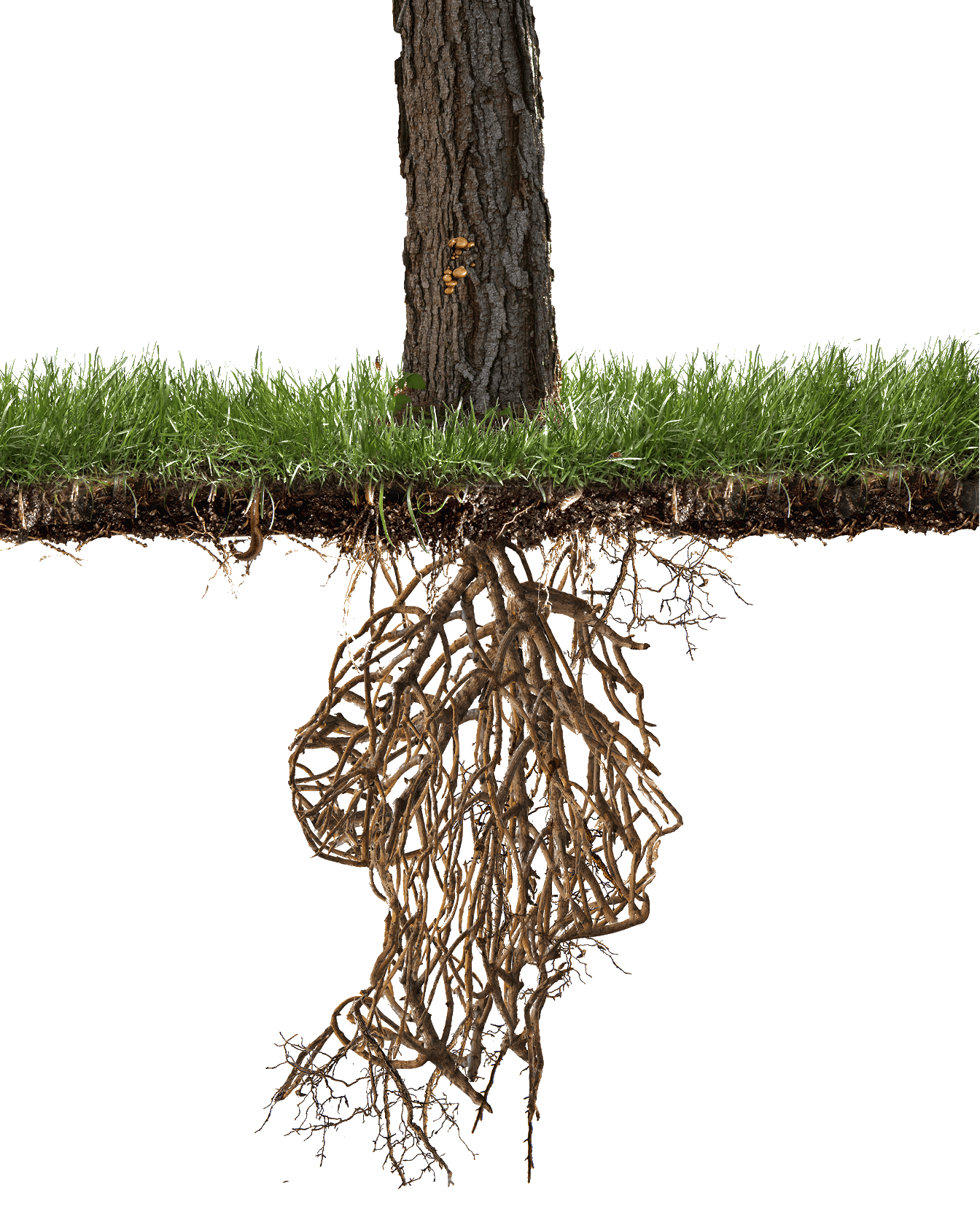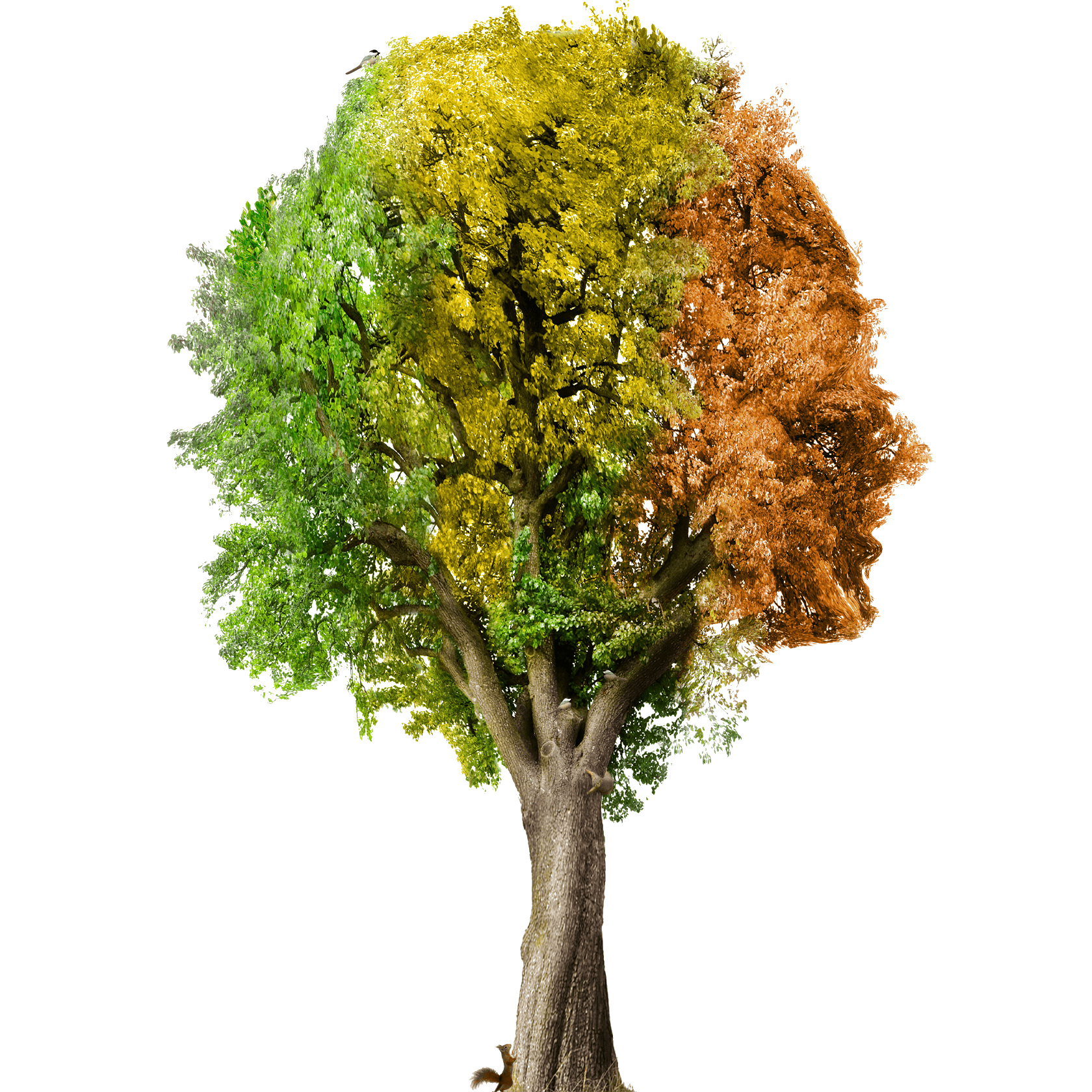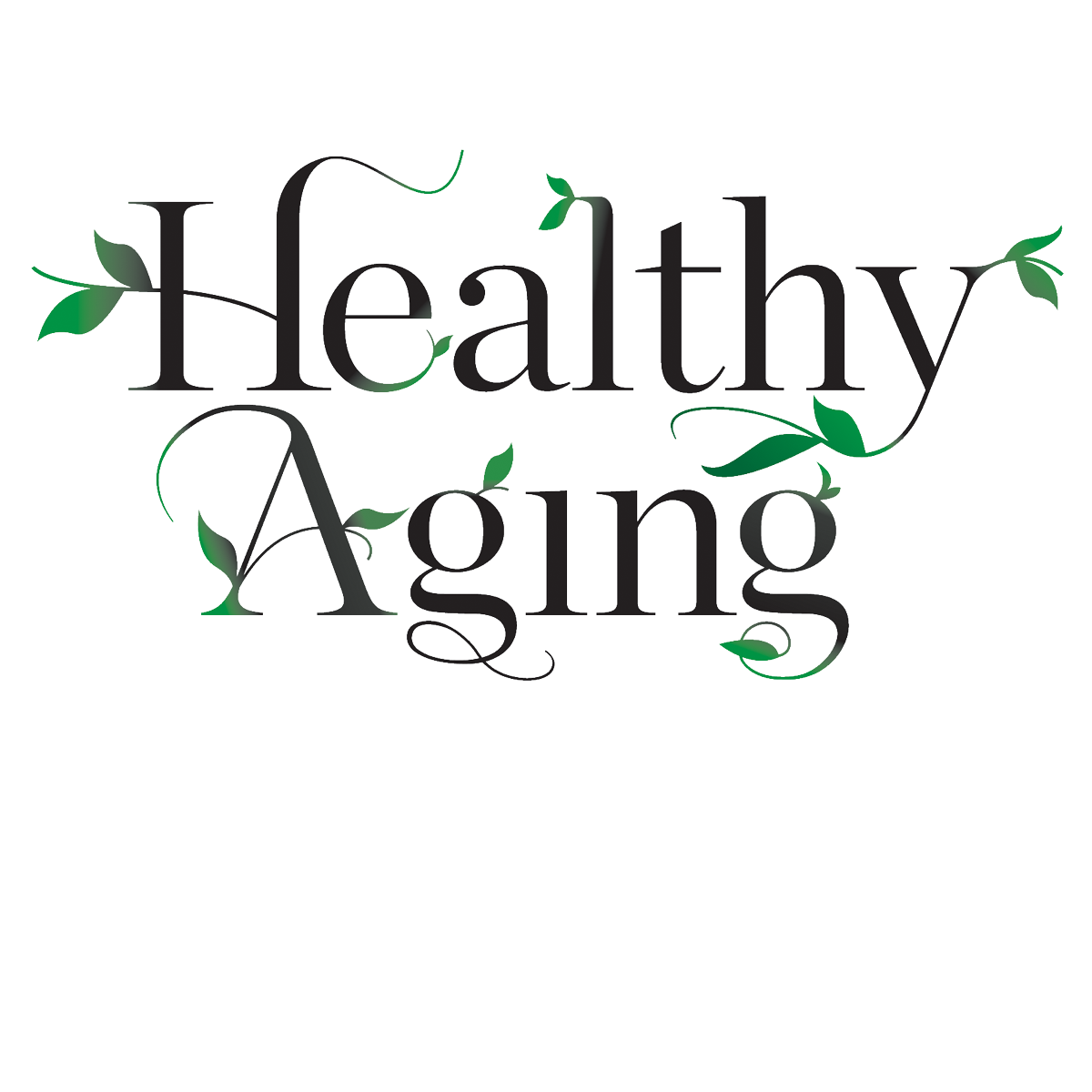Healthy Aging
The key is not the years in your life, but the life in your years
By Josh Baxt
Photo illustrations by Ann Cutting
Typography by B&G Design Studios

 ging hits everyone, but it doesn’t strike equally. Some people have long, healthy lives despite bad behaviors, such as smoking or excessive drinking. Others stay fit and embrace healthy habits, but still experience cardiovascular and cognitive declines. The difference in these outcomes has a basis in human biology and is the subject of ongoing research by many investigators at the Miller School of Medicine.
ging hits everyone, but it doesn’t strike equally. Some people have long, healthy lives despite bad behaviors, such as smoking or excessive drinking. Others stay fit and embrace healthy habits, but still experience cardiovascular and cognitive declines. The difference in these outcomes has a basis in human biology and is the subject of ongoing research by many investigators at the Miller School of Medicine.
Naturally, there’s a genetic component to aging. A variant of the APOE gene — APOE4 —for example, can put people at greater risk for Alzheimer’s disease. However, the picture is muddy. New research at the Miller School of Medicine is showing that people who inherited APOE4 from African ancestors have a lower risk of developing Alzheimer’s than those who inherited it from Europeans.
But genes are only part of the story. How — and where — people live can have a profound impact on the ways they age.
Data from the Centers for Disease Control and Prevention (CDC) from 2018 show a slight uptick in Americans’ average life expectancy, to 78.7, after posting declines since 2014. Fewer deaths from cancer and drug overdoses are driving that increase, though suicide deaths continue to rise. Still, life expectancy can vary as much as seven years between states. Florida exceeds the national average at 80.
And these numbers don’t measure quality of life. The American Heart Association (AHA) recently reported that Americans’ “healthspan” — the number of years people can expect to live in relatively good health — is only 66. AHA researchers blamed the 13-year gap on increasing obesity, diabetes and other chronic conditions. Once again, geography matters. Healthspan ranged from 63.8 to 70.3, depending on state of residence, with Florida at 67.9.
How do all these factors fit together? Nobody is really sure yet, but researchers at the Miller School, and colleagues around the world, are figuring it out: studying epidemiological data, sequencing genomes, and performing brain scans and other tests. Little by little, they are beginning to piece together the healthy aging puzzle, and that could have profound ramifications for how people thrive in their later years.
So What Does Healthy Aging Look Like?


When researchers and clinicians talk about healthy aging, they often use terms like disease curve. The idea is to adjust the curve so the chronic conditions that make aging so miserable — cardiovascular disease, diabetes, cognitive decline — show up later in life, say after age 90. Ideally, these illnesses would never appear at all, and people could live long, productive, disease-free lives.
“There’s a term for that: compression of morbidity,” said Ralph L. Sacco, M.D., M.S., who chairs the Department of Neurology and is executive director of the Evelyn F. McKnight Brain Institute. “The idea is you try to do everything possible to reduce the chronic disease conditions that reduce quality of life. That way, you can get to 90 and still have a good quality of life, followed by a more accelerated decline at the end.”
When is a good time to start thinking about aging? The research says as soon as possible.
“We know now that events that take place at certain times of development — young adulthood, middle adulthood and even in childhood — will impact how we age later in life,” said Bonnie Levin, Ph.D., the Bernard and Alexandria Schoninger Professor of Neurology and director of the Division of Neuropsychology and Cognitive Neuroscience. “We shouldn’t just think about aging as we get old, we should think about aging over the entire course of our lives.”
In other words, healthy aging may start at birth. Dr. Levin noted that aging is a multidimensional process. Yes, people can make important decisions about their lives that affect how they age, but their environments also play a major role. For example, neighborhood quality of life may be an important part of the equation: walkability, greenery, pollution.
From a research standpoint, Dr. Levin is particularly interested in understanding, and finding ways to counteract, frailty. By definition, frailty can include weakness, slow walking, reduced physical activity, unintentional weight loss or fatigue. People who show three of these symptoms are considered frail. Most important, geriatric scientists now understand that frailty is not inevitable and has treatable causes that include inflammation and stem cell depletion.
“We know the pre-frail window is a critical time because there can be meaningful interventions that can improve or reverse these symptoms,” Dr. Levin said. “But once we cross over into frailty, health outcomes are less malleable.”
For the Miller School researchers who study aging, early intervention is a common theme. In addition, many biological systems are interrelated. People who take care of their cardiovascular and metabolic health reduce their risk of dementia. The same is true for people who better manage hearing or vision loss. Reduced sensory input can drive cognitive decline.
In addition, the vestibular system, which encompasses parts of the inner ear and brain, helps govern balance. Falls grow increasingly dangerous as people age, but vestibular dysfunction may also be linked to cognitive decline.
“When we think about brain-based changes, we should think about how the brain functions as a network or circuit,” Dr. Levin said. “Cognition isn’t one region of the brain. There are underlying neural networks that are impacted, and we think that cognition and vestibular function share a common neural network.”
Because there are so many factors associated with aging, it takes a large, multidisciplinary team to address them.
“We work closely with the brain bank and the Alzheimer’s center,” Dr. Levin said. “The hearing work we’re doing with audiologists; the vestibular work with ear, nose and throat specialists. We really focus on integrated collaboration.”
Detecting Alzheimer’s Disease Earlier
Making a new drug is one of the most difficult things humans do. More than 90% of new medicines fail in clinical trials. With Alzheimer’s disease, that number approaches 100%. Clearly, scientists need to better understand the brain processes that contribute to Alzheimer’s and other neurodegenerative conditions.
One of the most important issues that needs to be solved is early diagnosis. Many neuroscientists believe that potential therapies may fail in trials because they are administered too late. By the time Alzheimer’s has progressed to a point where patients have actual symptoms, they may have more brain damage than any medication can overcome. In addition, earlier diagnosis can help patients obtain the best emerging therapies they need to delay symptoms.
“A brain disease, such as Alzheimer’s, is a multi-degenerative process,” said David Loewenstein, Ph.D., who directs the Center for Cognitive Neuroscience and Aging. “If we don’t understand the pathophysiology of the disease, and we don’t understand the earliest manifestations, we can’t possibly understand how to develop the proper interventions.”
Dr. Loewenstein and colleagues have developed a battery of cognitive tests. He likens them to a cardiovascular stress test, which measures a patient’s heart function while they exercise on a treadmill. In this case, clinicians and researchers are testing patients while they exercise their brains. These tests can potentially detect the earliest cognitive impairments, possibly years before traditional neuropsychological tests.
Because early diagnosis is so central to treatment, several Miller School faculty are developing more precise Alzheimer’s/dementia tests.
“We are working on tools to assess a variety of cognitive abilities,” said Michael Cuccaro, Ph.D., associate director of the Center for Genomic Education and Outreach in the John P. Hussman Institute for Human Genomics. “A person’s performance allows us to get a snapshot of their skills in memory, reasoning, executive function and other areas. That allows us to make a best-estimate diagnosis.”
These tools are designed to measure both cognitive and functional abilities — how people manage their day-to-day lives. The researchers hope these new measures, combined with advanced brain scans and other approaches, will diagnose patients earlier and catalyze better care.
“We believe that early detection is the key,” said clinical neuropsychologist Marcela Kitaigorodsky, Psy.D. “It’s key because once there has been significant neurodegeneration, it’s unlikely we’re going to find treatments that modify the disease. We have to intervene before that happens.”
Solving the Neuroprotection Mystery

The Miller School is taking a multifaceted approach to better understand Alzheimer’s disease and dementia to ultimately develop more effective treatments. In some cases, that means studying people with Alzheimer’s and mapping out how the disease progresses.
But there are also programs to illuminate why some people age better than others. The McKnight Brain Aging Registry at the Miller School, one of four such facilities nationwide, is collecting data from people who are 85 and older and cognitively healthy. Researchers will measure participants’ cognitive abilities, study their genomes and conduct comprehensive brain scans to better understand why they are doing so well despite their age.
The scans could be particularly interesting. In past research, scientists expected cognitively healthy people would have pristine scans, but that has not always been the case.
“Some of those people have beautiful scans,” said Tatjana Rundek, M.D., Ph.D., scientific director of the Evelyn F. McKnight Brain Institute. “When you look at those brains, you think, they’re no more than 60 years old. Other brain scans show horrible changes in terms of atrophy, white matter disease and other measures. But despite these problems, their cognitive function is the same as that of the people with beautiful brains.
“Our hope is that we will be able to characterize successful agers,” Dr. Rundek said. “By identifying these resilience and protective factors, we may learn what we need to modify early on in other people to help everybody age successfully.”
Ancestry and Alzheimer’s
The recent research linking ancestry and Alzheimer’s has added a new dimension to our understanding of the disease.
“If you inherited your APOEε4 allele from your African ancestor, you have a lower risk for Alzheimer disease than if you inherited your APOEε4 allele from your European ancestor,” said Jeffery M. Vance, M.D., Ph.D., professor and founding chair of the Dr. John T. Macdonald Foundation Department of Human Genetics, professor of neurology, and director of the Center for Genomic Medicine at the John P. Hussman Institute for Human Genomics (HIHG).
Dr. Vance and his colleagues — co-senior author Juan Young, Ph.D., an associate professor in the Department of Human Genetics and HIHG, and lead authors Anthony J. Griswold, Ph.D., research assistant professor of human genetics and associate director of the Center for Genome Technology, and Katrina Celis, M.D., postdoctoral fellow — have led a new Miller School genetics study following up on this observation. They have found that, among individuals with the same high-risk APOEε4 allele, people with European local ancestry in the APOE region have a significantly higher expression of APOE in specific cell types in their brains than those with African ancestry, suggesting this contributes to the difference in risk.
The Miller School study sequenced RNA from more than 60,000 individual cell nuclei from the brain tissues of Alzheimer’s patients carrying the APOEε4 with African or European local ancestry.
“The brain is an organ made up of many different cell types. To properly understand the effects of changes in gene expression you should look at each cell independently, rather than as a mixture,” Dr. Griswold said. “In this study we used single-cell processing and sequencing to look at brains of African and European APOEε4 carriers at a higher resolution than had been done previously.”
Dr. Griswold noted that the APOE gene was expressed significantly higher in the brains of the people with European ancestry. In addition, European ancestry individuals had high numbers of a cell type resembling reactive astrocytes, brain cells that are formed under stress and are toxic to neurons.
“This suggests a possible linkage of APOEe4 with the inflammation response, which is another risk factor for AD,” he said, adding that those astrocytes were not observed in any of the African ancestry individuals.
“The data from our study suggests that finding a way to block the increased expression of the APOEε4 allele could have potential therapeutic benefits,” Dr. Vance said. “It also supports the importance of knowing the ancestral origin of the APOEe4 allele when predicting the risk of AD for any individual carrying the APOEe4 allele.”
What the Amish Can Teach Us about Alzheimer’s

Efforts by Miller School scientists, and many others, to understand healthy aging have led them to some out-of-the-way places. In the 1990s, epidemiologists began noticing that Amish people in Indiana often showed healthier cognitive aging.
Margaret Pericak-Vance, Ph.D., who directs the John P. Hussman Institute for Human Genomics, was instrumental in discovering the relationship between the apolipoprotein E (APOE) gene and Alzheimer’s disease. The APOE4 variant increases an individual’s risk for Alzheimer’s disease, while the APOE2 variant protects against Alzheimer’s disease.
Dr. Pericak-Vance leads a study looking for genetic variants that protect against Alzheimer’s disease. She wondered what was giving some individuals in Amish communities a cognitive advantage. Do they have fewer APOE4 risk variants? Do they have other, protective genetic variants that counteract genetic risk factors such as APOE4? Is it environmental? Do Amish lifestyles confer a protective effect?
“We’re turning the tables,” Dr. Pericak-Vance said. “Instead of looking at what causes the disease, we’re looking at people who are cognitively intact to see how they’re protected against developing Alzheimer’s disease.”
Amish communities are great to study because the people are alike in so many ways: their genetics, their diets, their lifestyles. Researchers don’t have to control for variations in these and other factors.
“One reason to study the Amish is because they have kept themselves both physically and religiously separated from surrounding communities since they migrated to the United States in the 1800s,” Dr. Scott said.
He and Dr. Pericak-Vance collaborate with Jeffery Vance, M.D., Ph.D., professor of human genetics, Dr. Cuccaro, associate professor of human genetics, and others on the Amish studies. Early results have offered some genomic clues that will need to be more thoroughly studied.
“There seems to be an area on chromosome six that is more frequently held in common among the Amish who live past age 80 with no cognitive impairment and little physical impairment,” Dr. Scott said. “We haven’t figured out exactly what the genetic variant is, but it does seem like they have that area shared more commonly than we would expect by chance.”
Education and Social Engagement
Studying the Amish can provide other important clues about Alzheimer’s susceptibility. For example, it has been shown in many populations that more years of classroom education lessens the risk of developing Alzheimer’s.
Is education, by itself, protective? Probably not. Most researchers believe it’s a surrogate for other factors. The Miller School team hopes these Amish studies will help identify those factors.
Traditionally, Amish communities educate their children in church-affiliated schools. Students commonly leave school after the eighth grade to begin working on farms or pursue trades that may provide on-the-job training. But some older Amish adults left school earlier than eighth grade, and a few still complete high school.
“Even with a small variability in years of schooling, we can still show that education has an impact,” Dr. Pericak-Vance said. “This is important because, even though it has to be a surrogate, it shows that whatever is going on in Alzheimer’s starts many years before people actually show symptoms.”
The Amish studies also confirm the importance of social engagement, which has been proven protective.
“There was an Amish woman in her mid-80s who was really excelling cognitively,” Dr. Cuccaro said. “An interviewer asked how she spends her time and, along with gardening, she visits the ‘older’ people in the community. She was invested in being socially engaged with people who were even older than she was. There’s this altruistic bent, and I wonder how much that provides additional protection.”
Can We Cure Aging?


In a perfect world, a pill or some other treatment would dramatically slow aging — or even stop it altogether. The idea of treating aging or frailty is at a very early stage, but several approaches are in clinical trials funded by the National Institutes of Health and the biotechnology industry. Still, it is quite possible that humans are simply hardwired to grow old and die.
“We see dramatic shifts in gene expression in midlife,” said Claes Wahlestedt, M.D., Ph.D., associate dean for therapeutic innovation. “So, we feel this must be some kind of genomic programming. Humans are like other organisms; we’re not meant to live forever.”
Still, tantalizing studies in animal models, such as round worms, fruit flies and mice, have shown those lifespans can be extended. Caloric restriction, resveratrol (the supposed anti-aging compound in grapes and wine), and selectively turning genes on and off have all helped those organisms live longer.
At present, it’s unclear whether any of these approaches will work in people. Miller School scientists are continuing to advance this work — for example, Wahlestedt’s team has chemically refined resveratrol to see if it can be used to advance healthy aging and combat aging-related diseases such as Alzheimer’s.
But researchers are less focused on extending lifespan than on helping people be more resilient with age. In two studies published in 2017, Joshua M. Hare, M.D., Louis Lemberg Professor of Medicine and founding director of the University of Miami’s Interdisciplinary Stem Cell Institute, and colleagues tested the stem cell depletion hypothesis in subjects with aging frailty. Study participants were, on average, 78 years old, and received a single mesenchymal stem cell (MSC) infusion or a placebo. The results were startling.
“The infusions helped the participants who received them by increasing the amount of walking they could do in a six-minute walk test,” Dr. Hare said. “This was dramatic, because measuring how far someone can walk in six minutes is an accurate, informative way to determine their functional capacity. After the infusions, they could walk an average of 60 meters farther in six minutes.” In addition, the participants had changes in inflammatory biomarkers that predicted the response to treatment.
Mesenchymal stem cells are known to reduce inflammation, and that may be the mechanism driving these mobility gains. Still, the goal for Dr. Hare, and other researchers at the Miller School, is not to extend life so much as it is to make those older years healthier. Toward that end, in 2014, Dr. Hare participated in founding Longeveron, a life sciences company developing biologic solutions for aging and aging-associated diseases using intellectual property exclusively licensed from the University of Miami.
“Yes, we want to live longer,” Dr. Hare said, “but we want to get the most out of those years.”![]()
Richard Westlund contributed to this story.
Healthy Aging⚬
Healthy Aging⚬
Healthy Aging⚬
Healthy Aging⚬
Healthy Aging⚬
The key is not the years in your life, but the life in your years|
The key is not the years in your life, but the life in your years|
The key is not the years in your life, but the life in your years|
The Recipe for Healthy Aging
Many people dream of an anti-aging pill, but researchers are mixed on whether that is even possible. Still, many approaches are currently in clinical testing. These include drugs already on the market, such as metformin and rapamycin, and newer biological therapies, such as mesenchymal stem cells, and anti-senescent treatments.
“You don’t reverse aging, but you can increase successful aging, healthy aging,” said Dr. David Loewenstein. “Healthy aging has a lot to do with the healthy lifestyles you develop in middle age or even before that.”
While many of the factors associated with aging may be genomic or environmental issues beyond our control, there is a lot we can do to make aging a healthier process.
“Research shows that 35% of our risk for dementia is due to modifiable factors,” said Dr. Marcela Kitaigorodsky. “Many of these factors are lifestyle changes that we can make. They are our choices.”
So, here’s the current recipe for healthy aging. It involves the same common-sense advice we’ve been getting our entire lives, but biological research will certainly bring improvements.
1. Take Care of Your Metabolism
We all know what that means: Be active and eat well. On the activity side, embrace aerobic exercise that gets the heart going. It could be a run, a long walk, taking the stairs instead of the elevator. It’s important to be consistent and exercise a few times a week.
For food, many researchers recommend the Mediterranean diet: lean proteins (chicken, fish, tofu), healthy oils (olive, canola) and lots of fruits and vegetables.
Exercise and a healthy diet are not only great for your heart and blood sugar, but also really good for your brain. Intermittent fasting appears to have possible anti-aging effects, too.
2. Get Good Sleep
Research has shown that people who get quality sleep are often cognitively healthier as they age. Other studies have found the brain may use its sleep time to take a bath, washing away dangerous deposits, such as the amyloid beta plaques associated with Alzheimer’s disease. During sleep is when the body produces stem cells. The more we learn about sleep, the more important it is becoming to maintain our health.
3. Build Community and Learn
Social engagement has been proven to ward off cognitive decline. The more time people spend with other people, the better. In addition, the brain responds to learning new things. People joke about performing rote games, such as crossword puzzles or sudoku, but to move the needle on brain health we need to engage different neural networks. Take a French class or learn how to dance. In other words, give the brain a workout.
4. Open Your Eyes and Ears
More and more research has shown that losing our senses can precipitate cognitive decline. To guard against that, researchers and clinicians recommend getting our eyes and ears checked regularly. In some cases, getting a new eyeglass prescription or a hearing aid could provide a big boost.
5. Explore Biological Treatments
The National Institute on Aging recently formed the Geroscience Network to help explore some of the new ideas regarding the biology of aging. Information about enrolling in a clinical trial is available at Clinicaltrials.gov and the NIA website.



